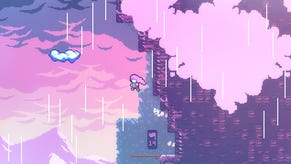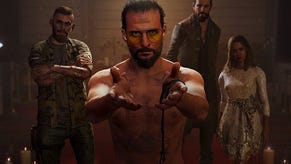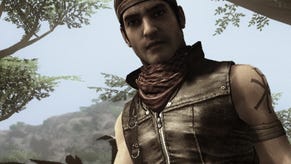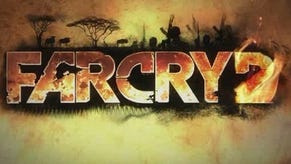Far Cry 2
Safari so good?
This is not the Africa of the brochures, of mustard savannahs, shimmering waterholes and slow-motion cheetah kills. There are no excitable anthropologists roaming these villages, no jeeploads of middle-class safari goers heading out in search of big game. This is not the Africa of the National Geographic.
This is, rather, the Africa of an unassuming sidebar story at the back of the international news section, of indecipherable conflicts waged on forgotten grounds. This is the Africa of the guerrillas, those who fight over a carcass land stripped of resources by long-gone colonialist vultures. This is the Africa of potholes, of rusty AK-47s, worthless money, dusty shantytowns, sweltering poverty and buzzing malaria.
Far Cry 2 is a third world FPS; a place where your guns might lock up and fail at any moment, where medical attention takes the form of prising bullets from wounds with heavy pliers and where, if you want to buy a round of drinks for your buddies, you better hope you brought diamonds for the down payment.
Gone are the sci-fi elements, the clicking aliens and Wolverine-like feral abilities of Crytek's Far Cry games. In their place Ubisoft Montreal conjures a heavy kind of realism beyond the stretch of most of the game's immediate rivals.
All this is made clear during the game's opening section, a long taxi ride from a small, makeshift airport to your hotel lodgings - 10 minutes and 3 per cent of the game away. The verbose driver delivers a near comprehensive overview of the socio-political situation that provides the backdrop to this most hyped and anticipated first-person shooter.
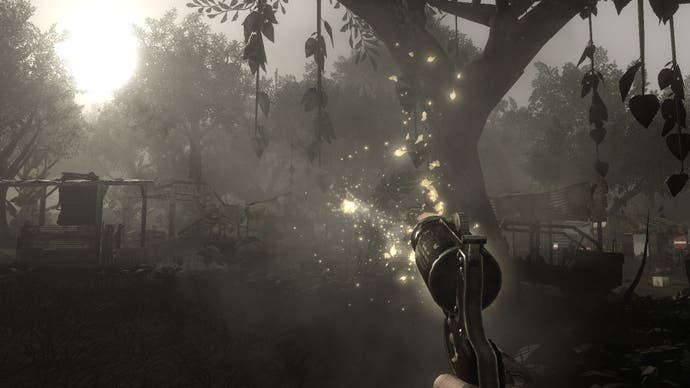
Your character, chosen from a roster of nine multinational options, lounges in the backseat. He admires whatever you point his eyes at in the 360-degree view that's rolling past: a farmer driving oxen through a shallow river, light aircraft streaking overhead ("they're not coming back...") or dusty military convoys.
En route checkpoints must be tactfully eased through ("You guys thirsty? You want me to pick you up a beer on my way back?") while on the radio you hear for the first time about the United Front for Liberation and Labour (UFLL) and Alliance For Popular Resistance (APR), two warring factions who control the area and your destiny in the game.
Your mission is to assassinate The Jackal, an arms dealer supplying both sides of the conflict with guns and ammunition, stoking the fires of ongoing conflict as he does so. And your mission, as your character spills from the backseat onto the sand and into the throes of early onset malaria, is over before it's even begun.
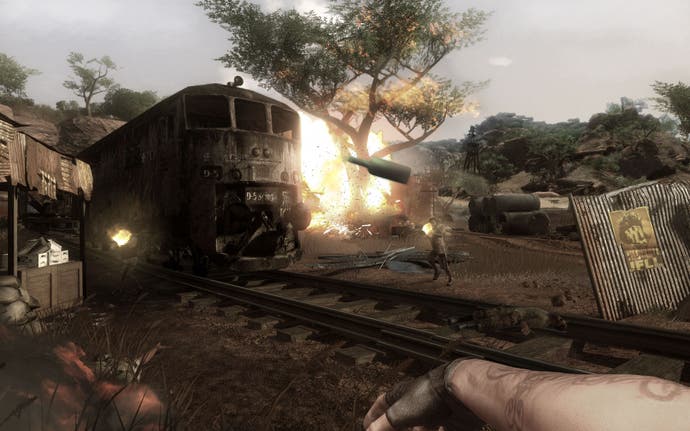
Sick and incapacitated. It's a brave way to begin a first-person shooter, a genre defined by violence, aggression and power. But make no mistake: the Portal-esque twisting of convention doesn't for last long. Five minutes later, dazed and blurry-eyed, you're staggering to your feet from a bed on the floor, groping for your pistol in an effort to fight your way out of a UFLL/APR skirmish that's erupted outside your bedroom window. From here on in, the rules are as old as videogame time: shoot them before they shoot you.
Of course, most gamers are less concerned with all this plot, premise and geography than they are with the game's much-vaunted visuals and, in this regard, the tested Xbox 360 version satisfies rather than amazes. Far Cry 2, the console version, certainly matches its closest system rivals - but it rarely surpasses them, save perhaps in the small details.



